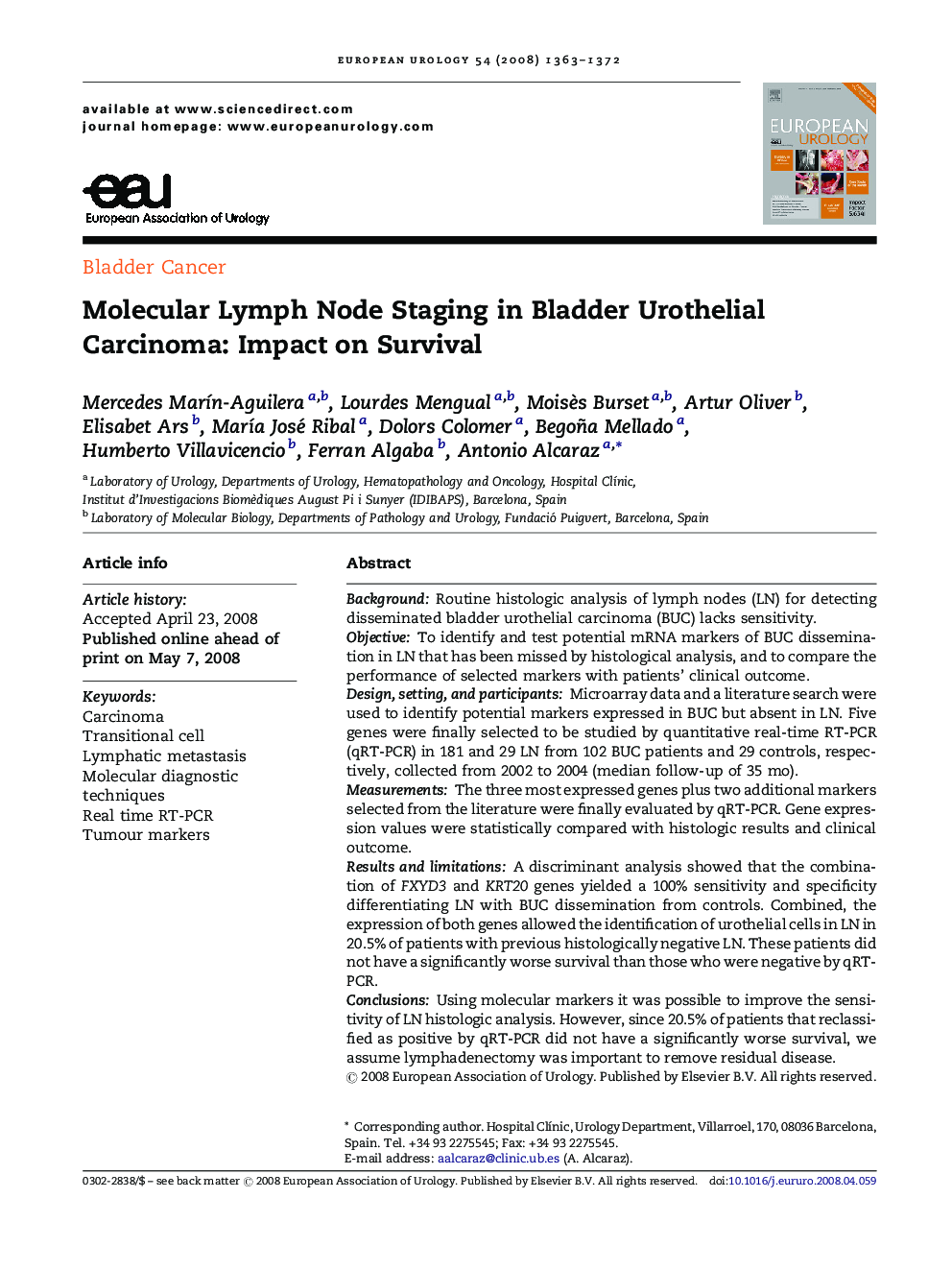| Article ID | Journal | Published Year | Pages | File Type |
|---|---|---|---|---|
| 3928749 | European Urology | 2008 | 10 Pages |
BackgroundRoutine histologic analysis of lymph nodes (LN) for detecting disseminated bladder urothelial carcinoma (BUC) lacks sensitivity.ObjectiveTo identify and test potential mRNA markers of BUC dissemination in LN that has been missed by histological analysis, and to compare the performance of selected markers with patients’ clinical outcome.Design, setting, and participantsMicroarray data and a literature search were used to identify potential markers expressed in BUC but absent in LN. Five genes were finally selected to be studied by quantitative real-time RT-PCR (qRT-PCR) in 181 and 29 LN from 102 BUC patients and 29 controls, respectively, collected from 2002 to 2004 (median follow-up of 35 mo).MeasurementsThe three most expressed genes plus two additional markers selected from the literature were finally evaluated by qRT-PCR. Gene expression values were statistically compared with histologic results and clinical outcome.Results and limitationsA discriminant analysis showed that the combination of FXYD3 and KRT20 genes yielded a 100% sensitivity and specificity differentiating LN with BUC dissemination from controls. Combined, the expression of both genes allowed the identification of urothelial cells in LN in 20.5% of patients with previous histologically negative LN. These patients did not have a significantly worse survival than those who were negative by qRT-PCR.ConclusionsUsing molecular markers it was possible to improve the sensitivity of LN histologic analysis. However, since 20.5% of patients that reclassified as positive by qRT-PCR did not have a significantly worse survival, we assume lymphadenectomy was important to remove residual disease.
